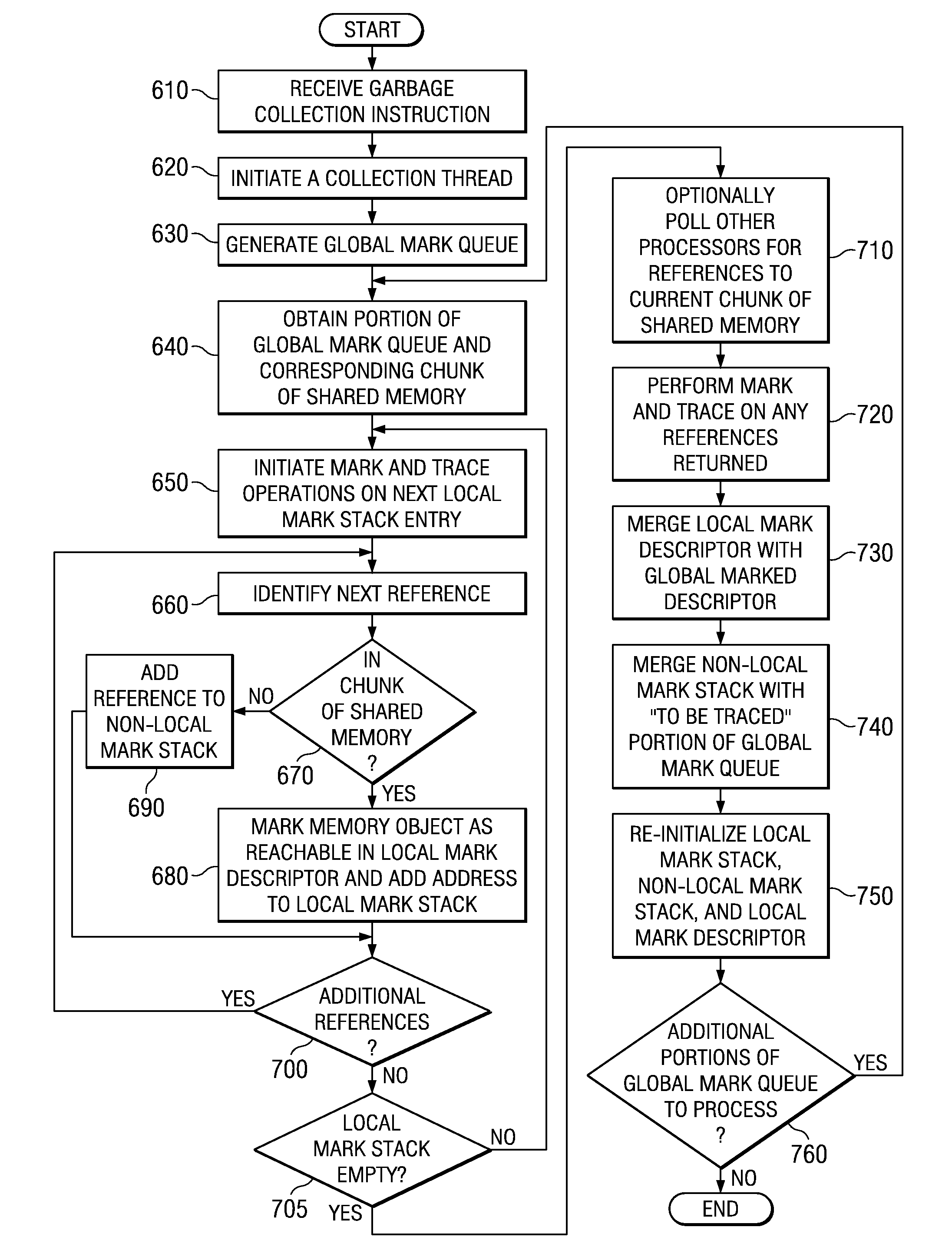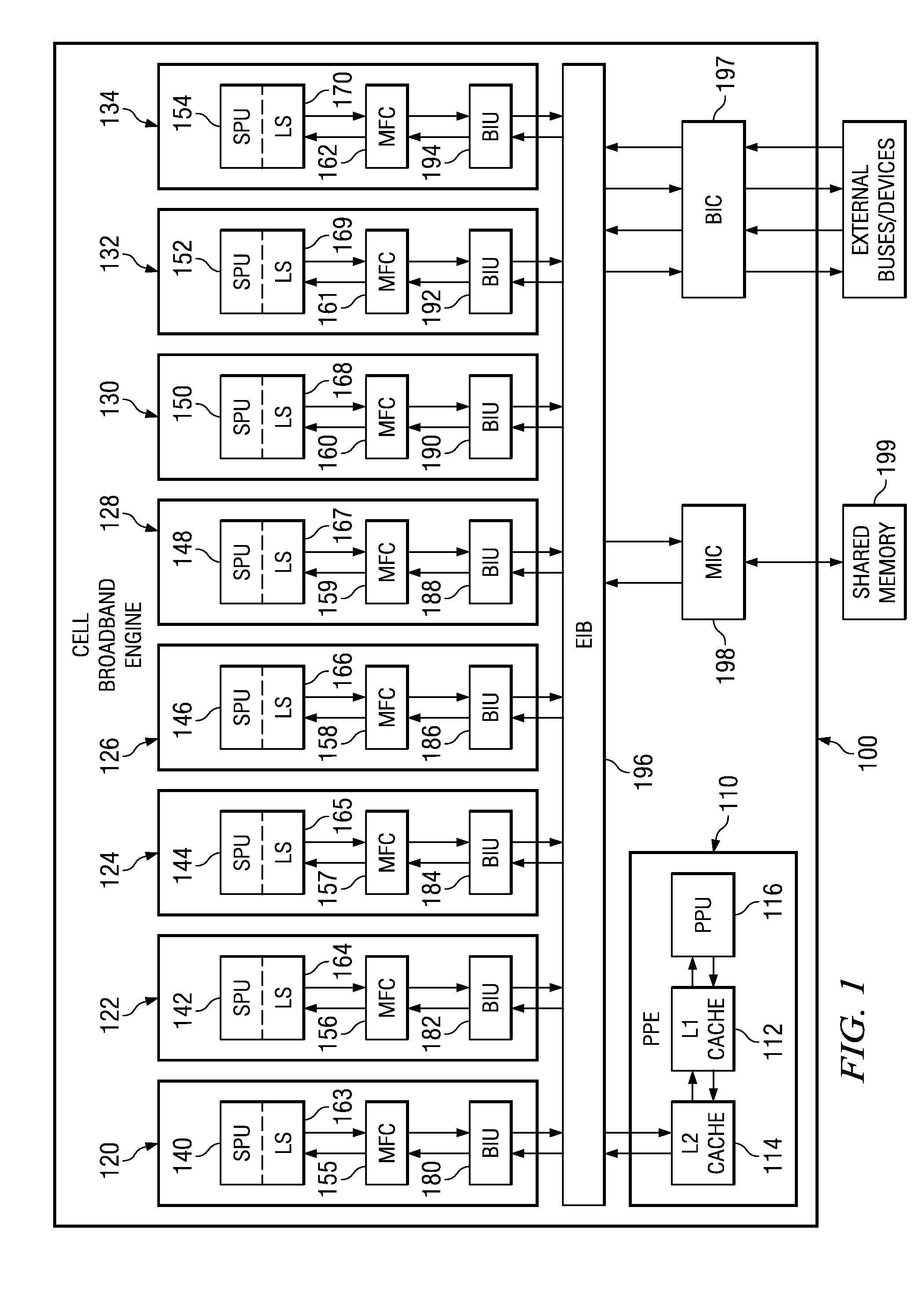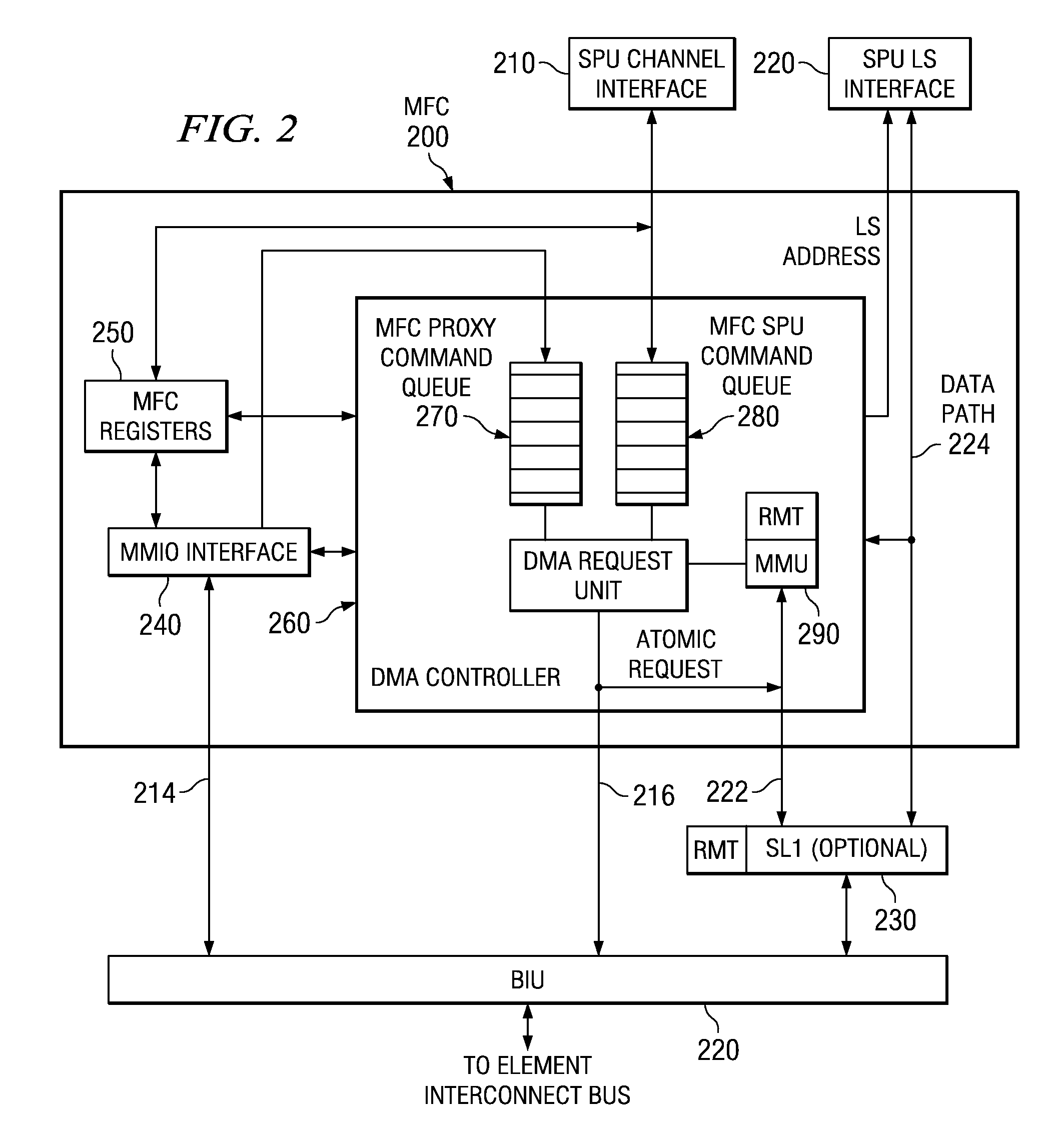System and method for garbage collection in heterogeneous multiprocessor systems
a multi-processor system and garbage collection technology, applied in the field of data processing system and method, can solve the problems of insufficient memory, insufficient garbage collection, and inability to properly perform the portion of memory,
- Summary
- Abstract
- Description
- Claims
- Application Information
AI Technical Summary
Benefits of technology
Problems solved by technology
Method used
Image
Examples
Embodiment Construction
[0050] The illustrative embodiments provide a system and method for performing garbage collection in a heterogeneous system. The mechanisms of the illustrative embodiments may be implemented in any heterogeneous multiprocessor system in which garbage collection needs to be performed. Examples of such heterogeneous multiprocessor systems include NUMA systems, non-SMP multiprocessor systems, and the like. One such heterogeneous multiprocessor system in which exemplary aspects of the illustrative embodiments may be implemented is the Cell Broadband Engine (CBE) available from International Business Machines, Inc. of Armonk, N.Y. While the illustrative embodiments will be described in terms of the mechanisms being implemented in the CBE architecture, it should be appreciated that this is only exemplary and the mechanisms of the illustrative embodiments may also be implemented in other heterogeneous multiprocessor systems without departing from the spirit and scope of the present inventi...
PUM
 Login to View More
Login to View More Abstract
Description
Claims
Application Information
 Login to View More
Login to View More - R&D
- Intellectual Property
- Life Sciences
- Materials
- Tech Scout
- Unparalleled Data Quality
- Higher Quality Content
- 60% Fewer Hallucinations
Browse by: Latest US Patents, China's latest patents, Technical Efficacy Thesaurus, Application Domain, Technology Topic, Popular Technical Reports.
© 2025 PatSnap. All rights reserved.Legal|Privacy policy|Modern Slavery Act Transparency Statement|Sitemap|About US| Contact US: help@patsnap.com



